Allenph - to understand the "secrets" of negative feedback you should not complicate things by applying unsymmetric supply voltages. The classical bipolar operation is based on dual supply voltages.
Therefore, replace GND1 by -Vcc.
Now - let`s take another example: R1=2k and R2=1k.
What will happen with Vin=1 Volt?
1.) At first (because the opamp cannot react without time delay) the output voltage will be either at +Vcc or -Vcc (supply voltages switched on) Lets assume Vout(t=0)=-Vcc=-6 V.
2.) It is simple to calculate (superposition rule) that the voltage at the inverting terminal will be Vn(t=0)=1*2/3 - 6*1/3=-4/3 V.
3.) Hence, Vn is negative and because of the inverting operation of the opamp the output voltage tends to go to positive values (less negative). As a consequence, the Vn voltage also will rise (from negative to positive values).
4.) However, between the starting value of Vn(t=0)=-4/3 V and any positive values there will be one single positive value for Vn(t) (in the µV range) which fulfills the equation Vout(t)=Vn(t)*Ao (Ao is the opamps open-loop gain). In this context, it is important to realize that there is no "switching" action - the voltage Vout changes its value in a short - but finite - time!
5.) Now, the opamp is in LINEAR operation at a point which is the only one that fulfills the above equation. Hence, we have a state of equilibrium which gives a fixed output voltage.
6.) For calculation of this output voltage (bias point) we neglect the Microvolts at Vn at set Vn=0 (virtual ground principle).
7) Now, it is easy to find the output voltage Vout for the given values (Vin=1V, Vn=0, R1/R2=2): Vout=-2V.
8.) Thus, we have a gain of G=-R1/R2=-2 (assuming opamp ideal with Ao infinite).
Comment: If you would set Vn=...µV instead of Vn=0 the difference between both results would be less than the real tolerances of the resistors.


